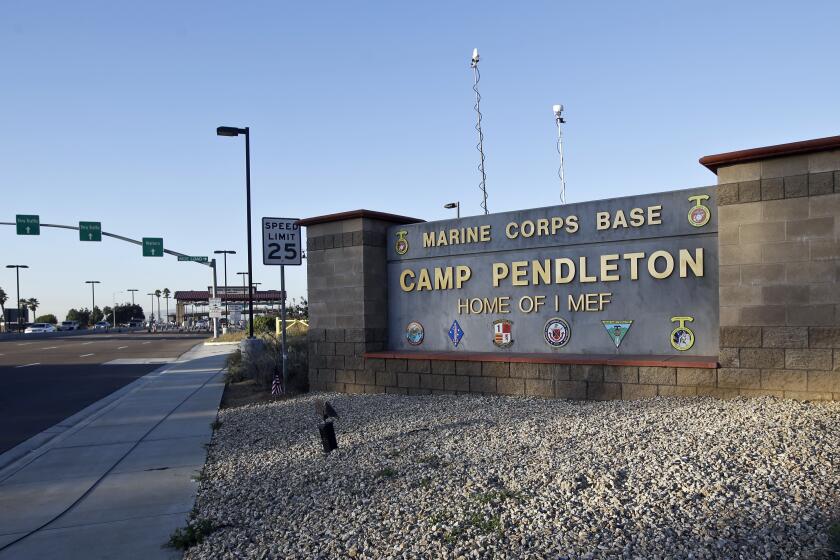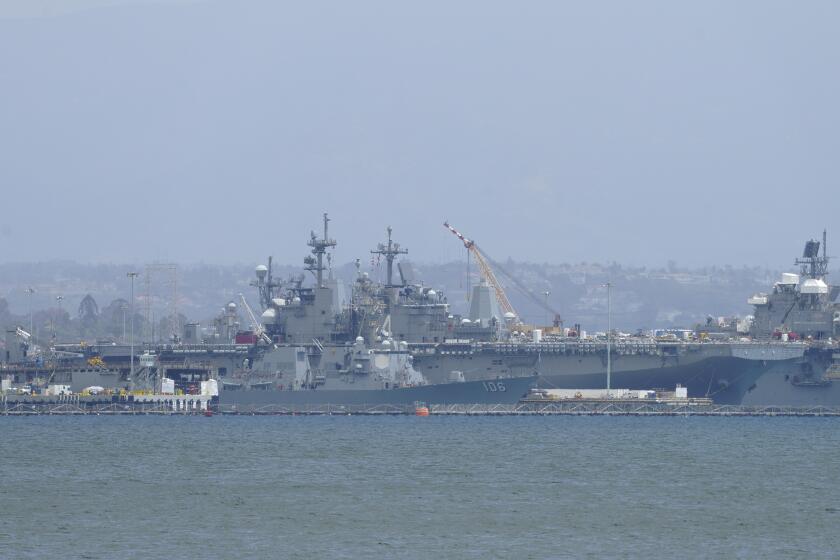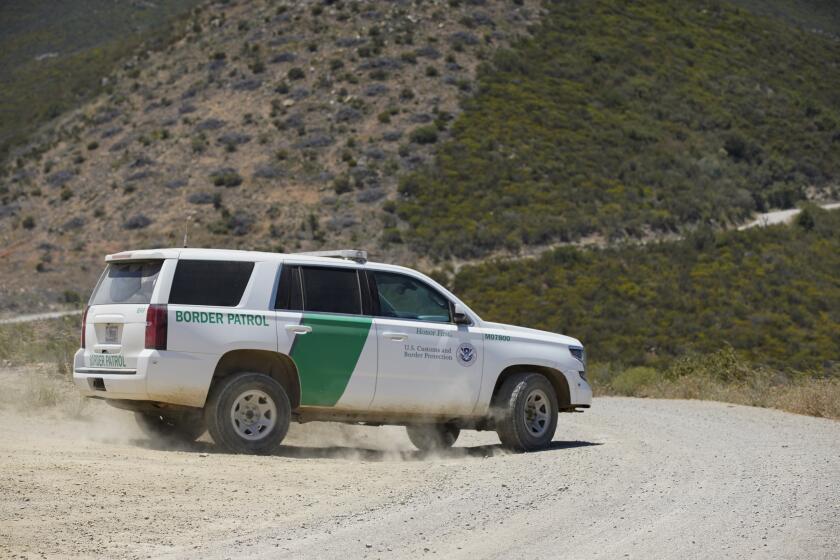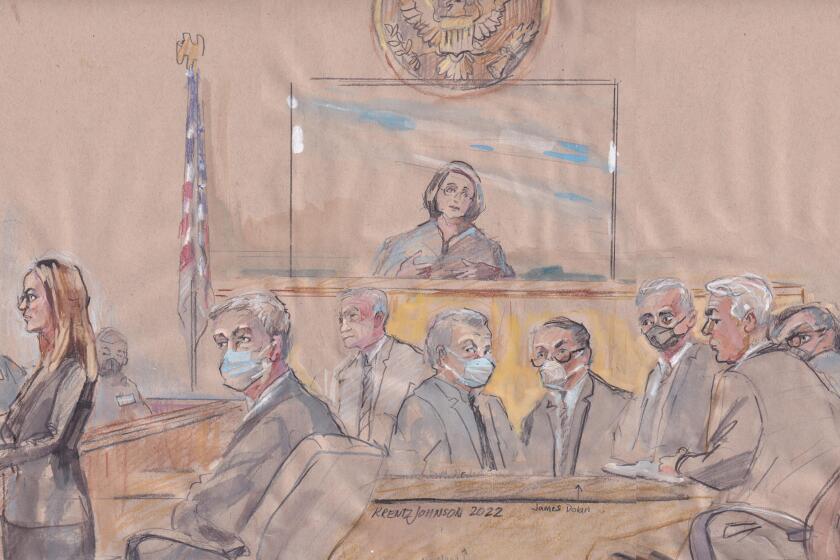Fuel costs don’t fly at Miramar Air Show
Balance sheet from 2012 shows cost of aircraft ops dwarfed by profits
The Pentagon said this summer that it was grounding military flights for the Miramar Air Show that begins Friday as a cost-saving measure during sequestration budget cuts. But last year’s event cleared more than $1.6 million in net profits, according to documents obtained by U-T San Diego through a Freedom of Information Act request.
Even factoring in nearly $250,000 in military aircraft fuel purchased with training funds, the 2012 air show was a big money-maker for air station community programs, including employment assistance for Marines leaving active duty and child care.
Some air show fans agreed that even the most popular events should not be exempt from across-the-board budget cuts brought on by failed debt negotiations in Congress.
Others complained it was nonsensical to deprive a money-making event of its star attraction. In July, when the Defense Department rejected a proposal to have locally-based military aircraft fly the Miramar Air Show, Rep. Duncan Hunter, R-Alpine, called the veto “pure politics.”
The jets, helicopters, MV-22 Osprey and other military aircraft burned 65,965 gallons of fuel last year for the air show, at a cost of $3.75 a gallon for JP5 grade. That three-day tally is less than the amount Miramar aircraft used last year during one day of regular training and support missions: 71,500 on average, according to Miramar officials.
The thirstiest aircraft to perform was the B-52 bomber, which sucked more than 6,000 gallons per flight, and the F-22 Raptor fighter jet, at more than 2,200.
The balance sheet from last year indicates overhead costs of $542,987. That money went to things like smoke oil for the Blue Angels ($16,500); pyrotechnics and other explosive materials ($20,576); water for military personnel ($2,200); portable toilets ($29,514); and overtime for civilian police ($45,003.)
The most income came from concessions ($467,096), Officers Club catering ($354,762) and sponsorships ($350,321.)
Although the infusion of cash into Marine and family programs at the air station is important, the bottom line isn’t the end-all for the annual event, said Miramar spokesman Maj. Carl Redding: “The air show is an institution in San Diego. It is a time for the air station to open the gates, meet the community and thank them for welcoming us into their lives.”
The Pentagon comptroller had announced in March that all aerial demonstrations would be grounded starting April 1.
“That policy has not changed,” according to the July 11 decision letter signed by Rene C. Bardorf, deputy assistant secretary of defense for community and public outreach. “In fact, no flyovers or aerial demonstrations have taken place except those in support of active duty funerals and the repatriation of remains of those formerly missing in action.”
When asked for a detailed accounting of the unspecified cost cited in the Defense Department decision rejecting military flyovers at the Miramar Air Show, Pentagon officials declined to comment and referred questions to the Marine Corps.
Jenn Elzea, a Defense Department spokeswoman, said the decision also involved a question of fairness because community events nationwide have had to do without military flights.
Miramar considered cancelling its air show after learning military aircraft had to stay parked, prohibited from even engine starts or taxiing in front of spectators.
“The DOD decision is disappointing because of the air show’s long-standing tradition in the San Diego community. We always enjoy hosting our neighbors and highlighting our Marines and sailors, showcasing the amazing things they do every day. But I also understand current budget restraints and the importance of being fiscally responsible,” Col. John Farnam, commanding officer of Miramar, said at the time.
“Air show or not, I want to thank the San Diego community for always supporting us and making us feel at home.”
The Marines tossed a year of preparation and assembled a new air show plan within weeks, proceeding with its marquee annual community event in San Diego using civilian fliers. They also hope new attractions permitted under the Pentagon restrictions will draw a more diverse crowd than flyboys and girls.
The shorter, two-day event headlined by the Patriots civilian six-jet performance team features a favorite standby nearly axed from the lineup, the Wall of Fire, as well as live bands, drag racing, and a 5k runway run.
The $1 million-plus in air show profits typically funds about 15 percent of the annual budget for Marine and family programs at the air station, out of a total Marine Corps Community Services budget of about $50 million.
A military air show without military flights, however, is a tough sell.
“We have no idea, because the show is different this year, what that revenue is going to look like. But we are hoping San Diegans still come out and support us,” said Mary Bradford, director at Miramar for Marine Corps Community Services.
“For those who ask the question what can I do for my Marines and sailors in San Diego? This is one thing they can do to support them and have a good time.”
The Navy Blue Angels in their F/A-18 Hornet fighter jets and the F-22 Raptor helped thrill a crowd of about 280,000 on the biggest day of the air show last year. More than 500,000 turned out over three days.
This year, Miramar officials are planning for a much smaller crowd Saturday of about 75,000.
Even if local military officials, aircraft boosters and politicians had won their battle for a waiver to the no-fly policy, they would have lost the war for the air show to go on as always, because of this week's government shutdown.
“Even if the waiver had been granted, the military acts would have been canceled because of the shutdown,” said Col. Steven Warren, director of defense press operations at the Pentagon.
Get Essential San Diego, weekday mornings
Get top headlines from the Union-Tribune in your inbox weekday mornings, including top news, local, sports, business, entertainment and opinion.
You may occasionally receive promotional content from the San Diego Union-Tribune.






